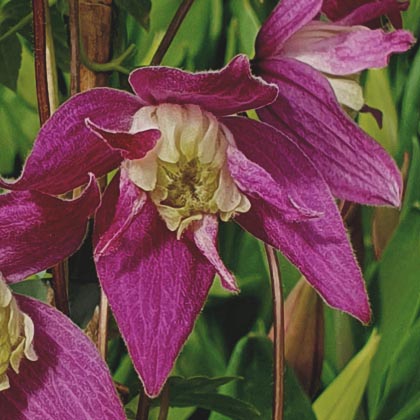
Clematis koreana Jette


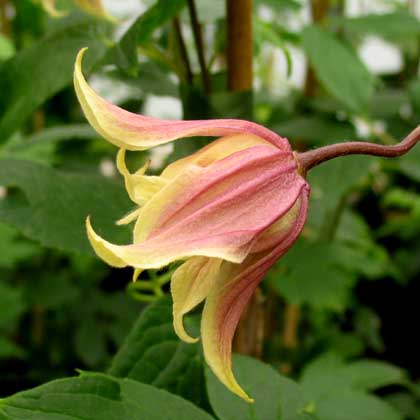
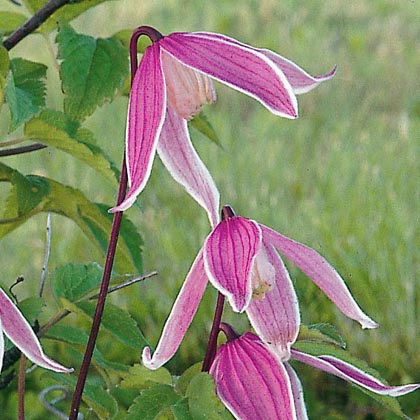

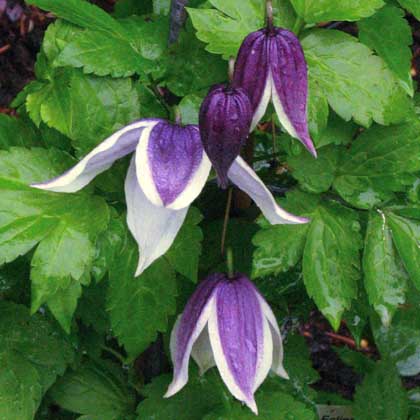

On the following pages, we address a wide range of questions from our customers. Questions about clematis in practice and botany.
Basic questions about planting and pruning clematis can be found in the guide.
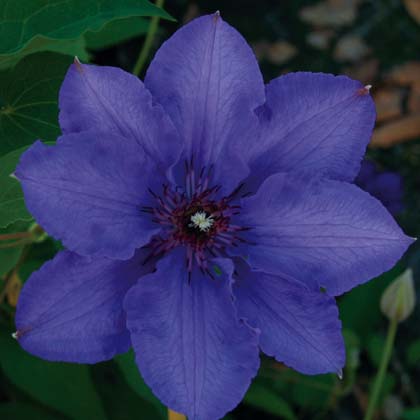
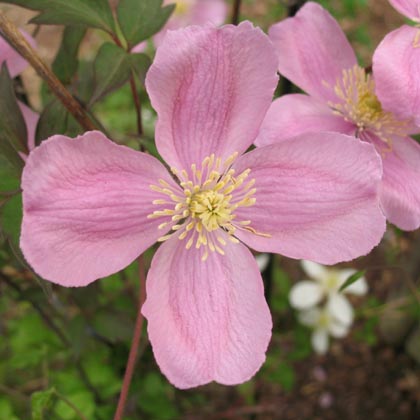

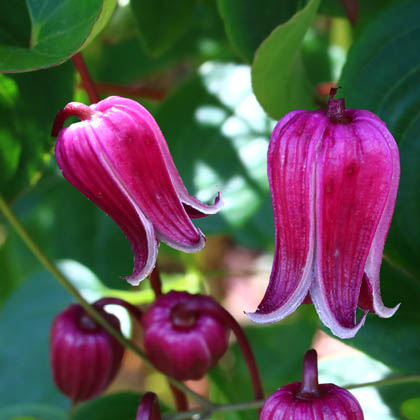
Clematis are buttercups (Ranunculaceae), which also include anemones, delphiniums, Christmas roses, liverworts and columbines. Most clematis, which are widespread throughout the world, are woody perennial climbing plants. Exceptions are the perennial clematis and those clematis that must be classified as semi-shrubs.
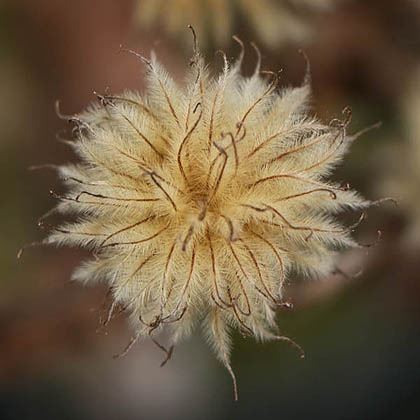

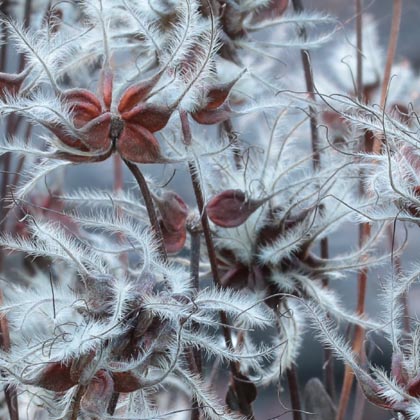
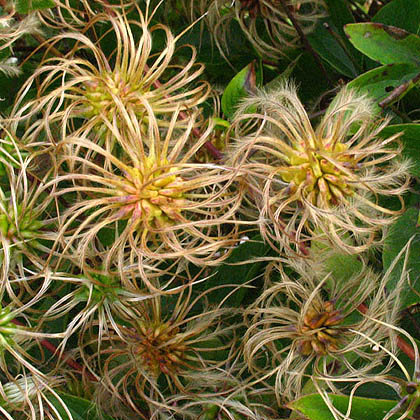
Not only are the flowers of the clematis very beautiful and diverse, this also applies to the fruits. They have a special charm. There are bizarre, shiny or spherical shapes among them. They seem to come from another world. It’s worth taking a closer look. Impressive image motifs are available to the hobby photographer!
The fruits appear during or immediately after the flowering period and can be used as cut flowers in small bouquets. The fruits can also be used in dry binding during Advent.
Botanically speaking, clematis fruits are a covered-seeded nut. (Nuts) A woolly ball shape is formed, with the seeds arranged on the outside. Nature conservation is not neglected either. Our native songbirds use the woolly flying hairs on the seeds as padding material for breeding in their nests.
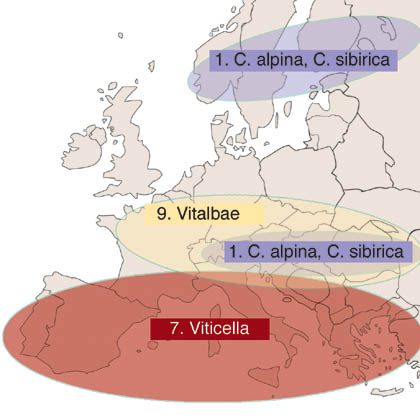
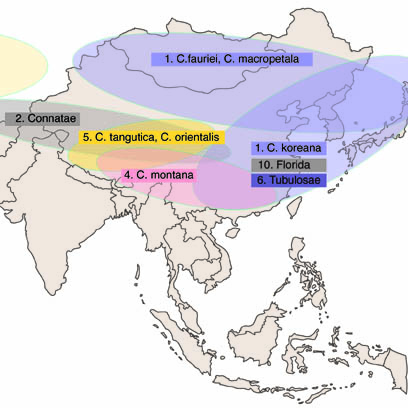
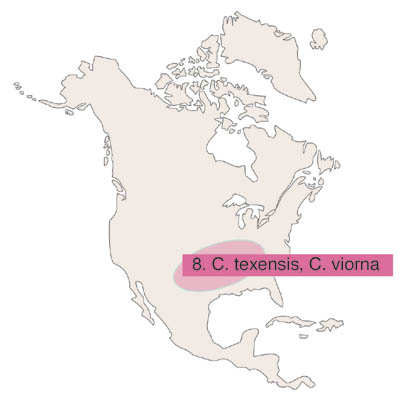
Our native clematis are: Clematis alpina, Clematis recta, Clematis vitalba and Clematis viticella (naturalized). Clematis grow in temperate climates in the northern hemisphere and are mainly found in mountainous regions of Asia. Most clematis are hardy!
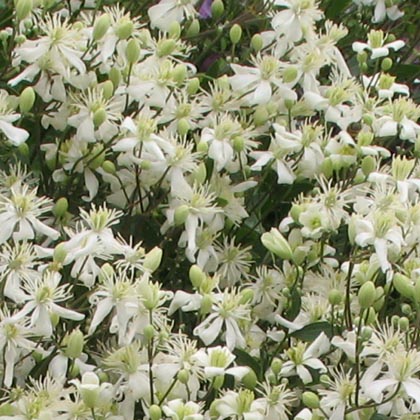


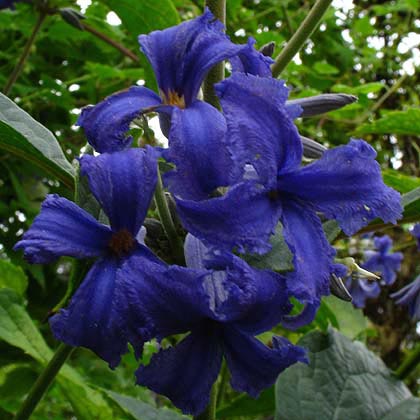
Yes, there are many fragrant clematis, but only a few species have a very pronounced or intense scent. (e.g. Clematis flammula or Clematis montana). The fragrance is usually only slightly pronounced, sweetish, fruity or vanilla-like. Some Clematis montana have an intense scent of vanilla or chocolate.



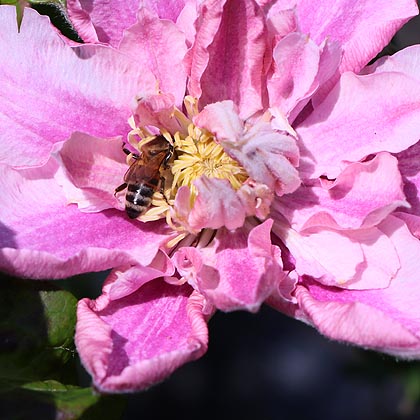
Many clematis are insect and bee-friendly. The small-flowered species are particularly popular with them. The difference is that some clematis provide both pollen and nectar, while others only pollen. Bees, bumblebees and other insects need nectar = carbohydrates for their diet. Pollen = protein is mainly needed for rearing the larvae. All clematis, the seed heads were also previously pollinated by insects, logically!
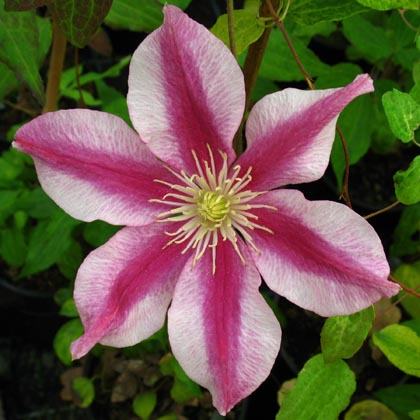
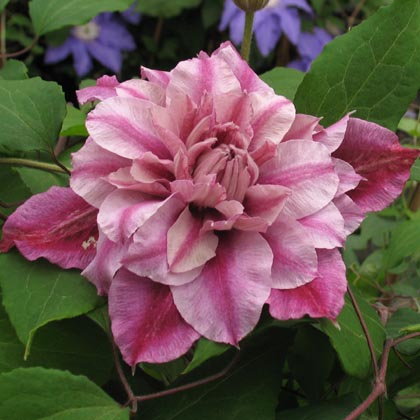
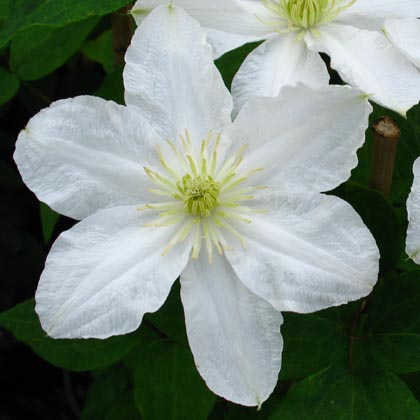
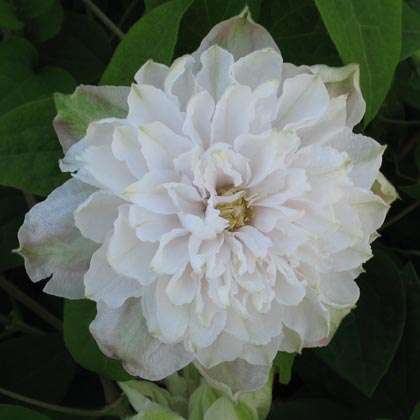
Clematis are genetically capable of producing double flowers. This is particularly true of the large-flowered clematis hybrids, which originated in East Asia. Cultivars from three clematis species are particularly involved here. Clematis florida, Clematis patens and Clematis lanuginósa. Clematis florida also bloom profusely on young shoots, mainly in summer to fall. Clematis patens and lanuginósa, as well as crosses between them, flower double in spring or early summer and again in late summer, usually unfilled or semi-double. There are also exceptions that flower double in both periods. The spring flowers, some of which are densely double, appear on short shoots from last year’s wood. The double flower buds are laid in the fall and the following winter dormancy. The more favorable and longer the winter dormancy, the denser the double flowers will be in spring! The double-flowering varieties all belong to pruning group 2


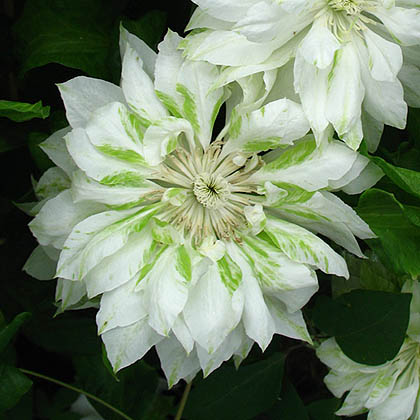

Some clematis varieties luxuriate more or less strongly. This is often misinterpreted as sick or unnatural. It is a natural phenomenon that depends on the variety and the temperature. Double-flowering clematis have a greater tendency to luxuriate than single-flowering varieties. This is particularly pronounced with many Clematis viticella. With Clematis viticella `Alba Luxurians’, the word “luxuriate” is already part of the name. It is more visible with light-colored varieties and cool temperatures than with darker varieties. Occasionally only very few green “speckles” appear, as can be seen in C. Andromeda.
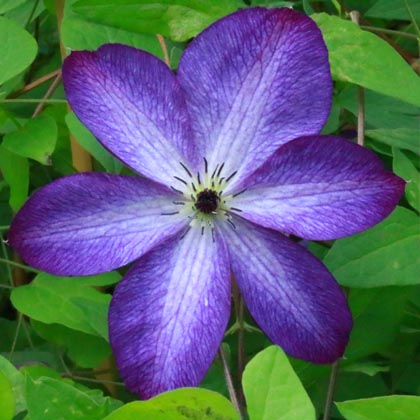


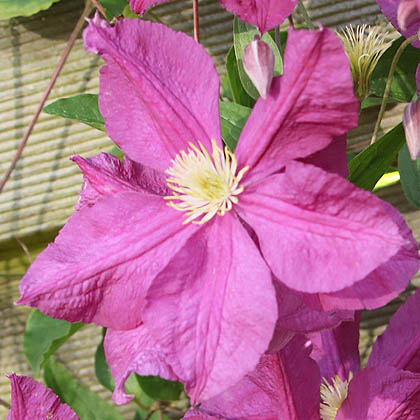
A complete color change is impossible. The color fades somewhat when: Extremely high temperatures or if nutrition has been neglected. A lack of light can also affect the color.



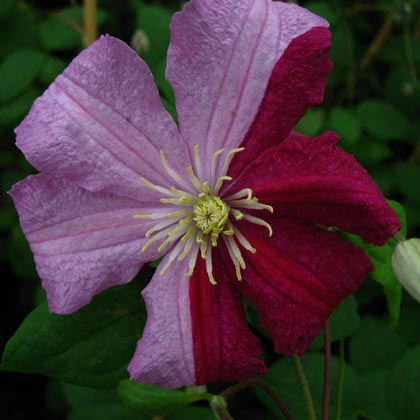
Questions keep coming up as to whether my clematis is sick? The leaves become whitish along the main veins, other leaves are variegated or some petals have a different color. The majority of these phenomena are mutations, which can be traced back to a change in the genetic material. In my many years of practice with clematis, I have discovered these two color mutations, among others. Abb. 3 shows C. Königskind blue with a small amount of pink. A new variety has been created here. (Rosa Königskind) It has the same properties as its blue predecessor. The fig. 4 shows C. Remembrance with petals by C. Comtesse de Bouchaud. This mutation originated in Great Britain. Both varieties have identical properties, in these two cases only the color differs significantly.
Mutations can also occur in clematis leaf platforms, but this often goes unnoticed. Not to be confused with different leaf shapes on the same plant. This happens all the time with many clematis.
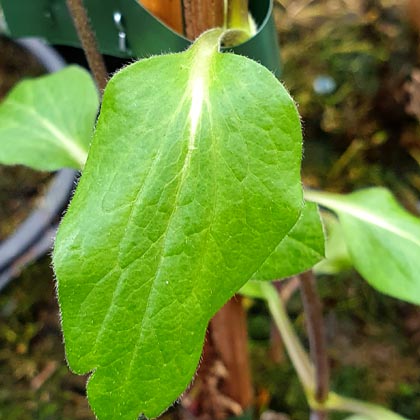


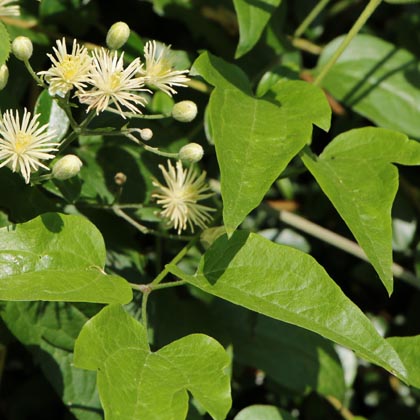
Leaf changes in clematis
Our native Clematis vitalba has two different leaf shapes. There is a youth and an old age form here. Young plants have strongly “serrated” leaves, while older plants have “entire” leaves. The age form begins when flowering is achieved in the third year if propagation was carried out by sowing!
If there is vegetative propagation (e.g. through cuttings) as is the case with most clematis, then only the age form is visible. The juvenile form dates back a long time and only the breeder has ever seen the juvenile form.



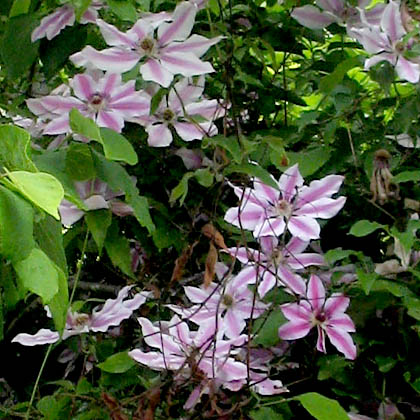
There is no one perfect location for all clematis! A general distinction must be made here between the requirements of the individual clematis species’ native habitats. You should therefore choose the location carefully when planting.
As already mentioned, clematis are native to almost all parts of the world and, depending on their area of origin, they should also be treated here in our gardens. Most clematis prefer a cool and airy location in partial shade.
The old cliché “feet in the shade, head in the sun” is only partially true. Clematis viticella, orientalis and texensis love a sunny spot. Clematis alpina, koreana and all atragene clematis thrive very well in the shade.
Most large-flowered clematis hybrids can be placed well in a semi-shady or shady location. The site itself also requires humus-rich, permeable soil, which may need to be adapted or improved accordingly. Note: Light or white clematis are more visible in the shade than darker ones!
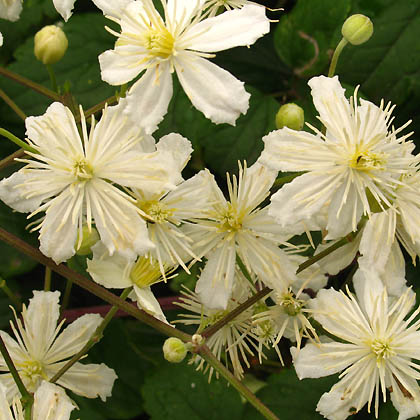


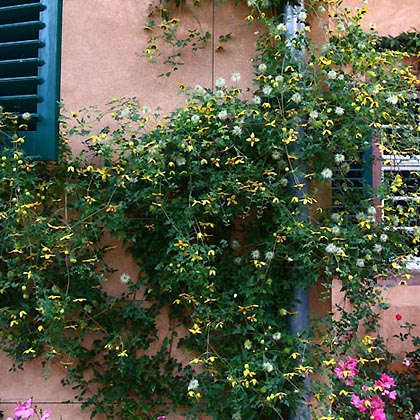
Most clematis are robust and easy to care for. The exception is the large-flowered clematis. They are generally considered sensitive when it comes to the dreaded clematis wilt! There are various reasons for this. Clematis can be found on many continents and have very different habitat requirements depending on their origin. If you take this to heart in advance, you won’t know any sensitive clematis. Basically: the cooler the better!
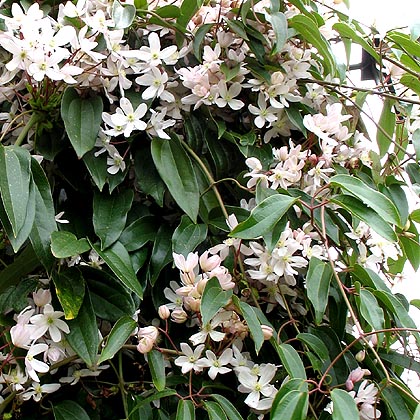
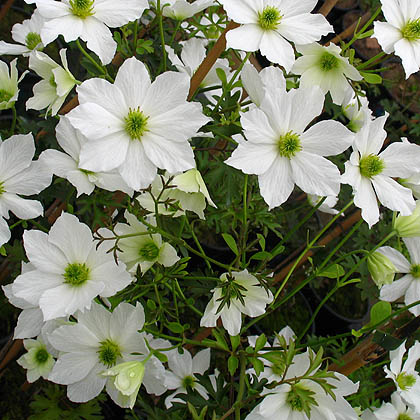
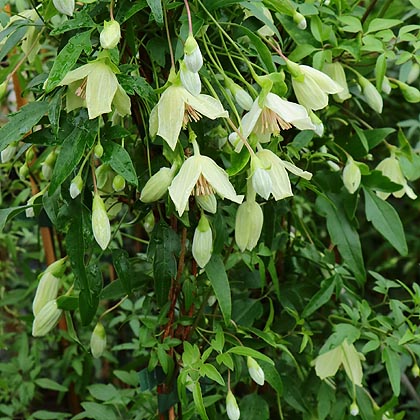

The answer is yes, there are some evergreen clematis. They mainly originate from Mediterranean climate zones (also from New Zealand) and need some winter protection here in Germany. Clematis armandii is an exception, as it tolerates the most frost (down to minus 15°).
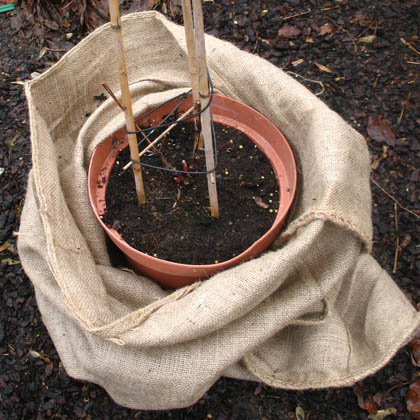
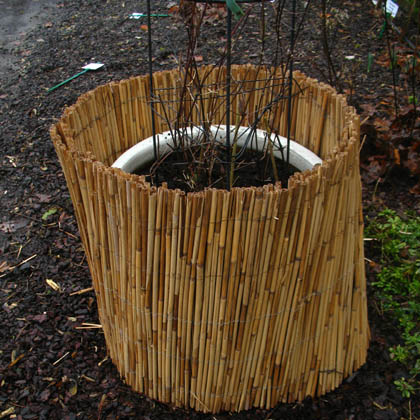
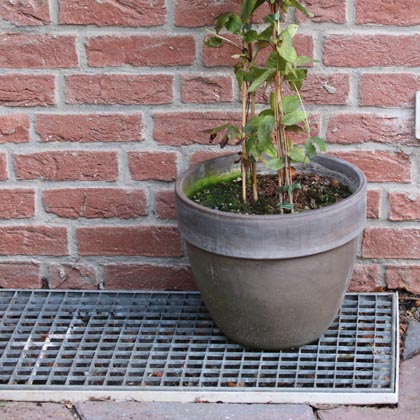
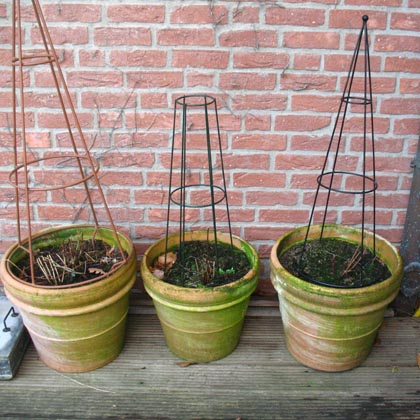
Winter protection is only necessary for some clematis.
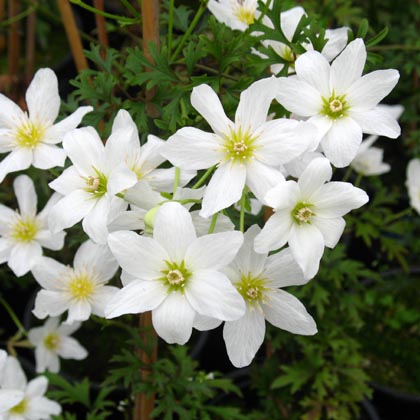


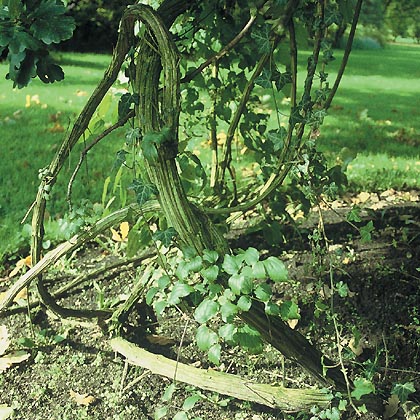
Clematis can live between 70 and 140 years. New Zealand’s evergreen clematis have a much shorter lifespan of only 20-25 years. Only our southern European Clematis flammula reaches a comparable age. Nevertheless, it remains present in our gardens for decades, because new seedlings have established themselves on the spot unnoticed due to the rich seed set!




There are reasons why clematis do not flower or no longer flower and what can be done about it. Incorrect timing when pruning is one cause and applies exclusively to Clematis montana, alpina and their relatives and all evergreen clematis. (see pruning guide)
Another very common cause is a disproportion between the number of roots and the number of shoots. Large-flowered clematis are particularly worthy of mention here. 2. or In the 3rd year of growth, the plant produces an excessive number of shoots, which become very thin and therefore cannot develop buds and flowers. These shoots shade each other and eventually turn yellow at the bottom and then brown. This can be remedied by removing two thirds of all shoots, which must be cut off close to the ground. The remaining shoots become much stronger and are able to flower again. C. Miss Bateman is a typical example of this phenomenon.
If clematis are very crowded by other plants in the immediate vicinity, this can also have a negative effect on their flowering behavior. Late frosts in April or May can damage the buds of the montana group to such an extent that no more buds or flowers can be seen.
An acute lack of water can cause summer-flowering clematis to flower sparsely or not at all. Similar phenomena also occur with nutrient deficiencies.
Pests can eat or damage the buds. Snails, earwigs and mice are responsible for this.
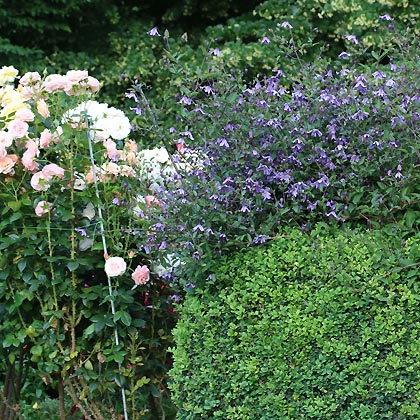
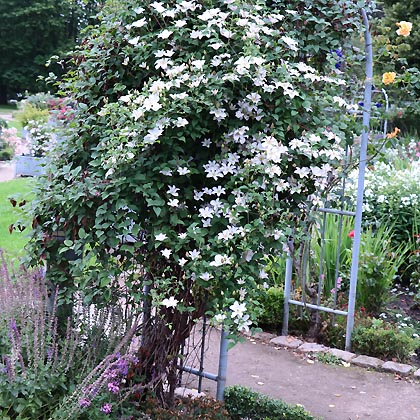
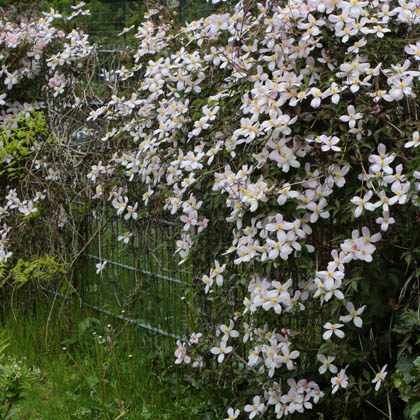

Not necessarily, you can also let clematis grow “wild”. They then become increasingly unsightly in the lower area and become more and more bare. In some places in the garden, this is certainly not a problem. A lack of pruning has little influence on the flowering behavior. Without pruning, unfortunately “the previous year’s diseases and pests” are also transferred.
Conclusion: Correct pruning keeps clematis healthier, more vigorous and more vital.
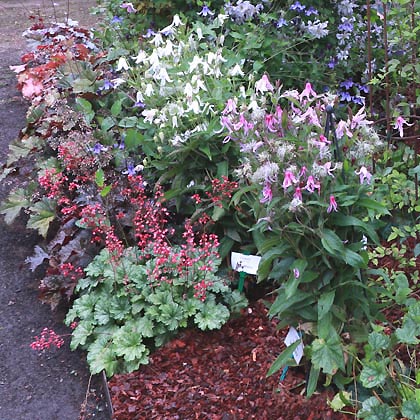

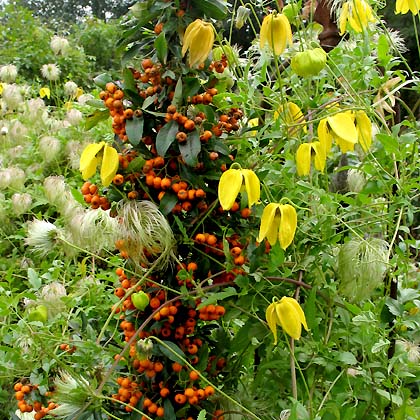
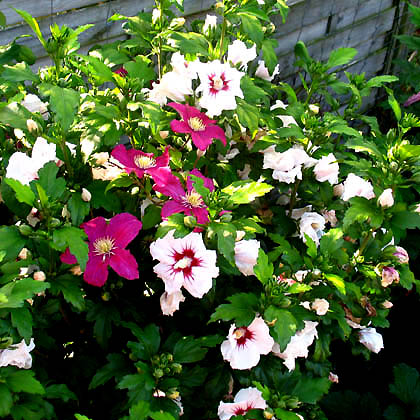
Do clematis get along with other plants? Clematis get on well with most other plants and can even be combined very well. There are countless possibilities if you consider the following. The growth height and flowering time must be coordinated in a combination. Different or similar colors should harmonize with each other and the light requirements of both partners should be tailored to each other. In order to avoid root pressure, shallow or deep-rooted plants can be used in a targeted manner. When combining with flowering plants, the question arises: flowering time together or separately? Contrast or tone on tone? It is important to remember that the background plays a decisive role in the color scheme. Light-colored flowers have a better long-distance effect than dark flowers.
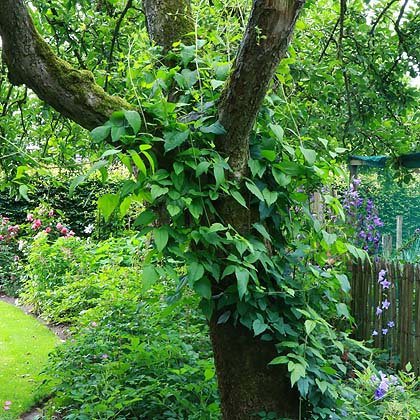
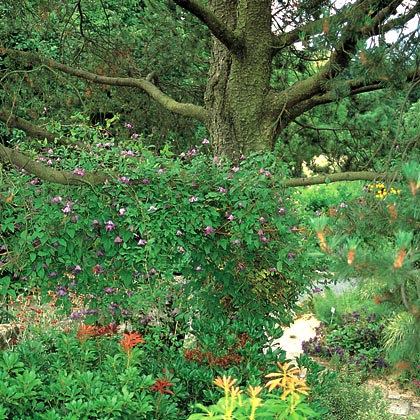


Only a few clematis are suitable here. The area under a tree is naturally shady and dry. Clematis of the alpina, montana and vitalba groups(Paul Farges) are most suitable. If trees are translucent, the selection can be significantly expanded. A rhizome barrier can be successfully incorporated to facilitate the supply of water and nutrients. Practical tip from the expert: If possible, it is best to plant on the side of the tree facing the wind (windward side). (Windward side) This saves a lot of fixing work. Although all clematis grow towards the light, every wind/storm holds against them. It is important to consider the wind direction when planting. Applies not only to trees, but also to fences, archways or obelisks etc.
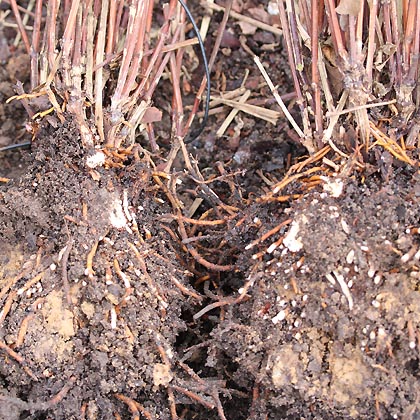

The answer to this question is: Yes, it is possible and the following should be noted. The best time for this is during hibernation from November to February. The clematis to be replanted must be pruned back very severely for this. Special care must be taken to ensure that as many roots as possible are preserved. If this is not possible, the clematis will still survive this procedure! Depending on their age and size, they are pruned back to 20-80 cm and quickly planted in their new position. In the following year, growth slows down considerably and only returns a year later. The lost root system must first develop again. Older perennial clematis can now be divided easily.
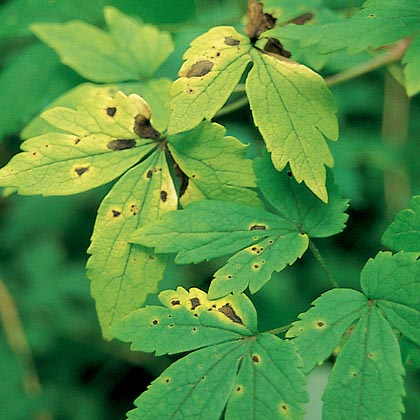
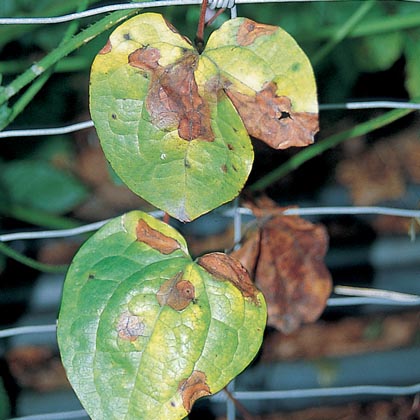
In principle, this is possible! Clematis do not suffer from soil fatigue, as is the case with roses, for example. Replanting in the same place should be avoided if a clematis was previously affected by wilt and died as a result. This applies exclusively to large-flowered clematis hybrids. A new infection is then very likely. Many small-flowered clematis can be replanted here. Soil replacement is helpful, but is usually overrated. Most small-flowered clematis are resistant to clematis wilt, and many are even immune to this dreaded disease. In some botanical species, the infection is limited to punctiform, irregular leaf spots, which may occur latently. These clematis do not die from it. Find out more about diseases and pests in our guide!


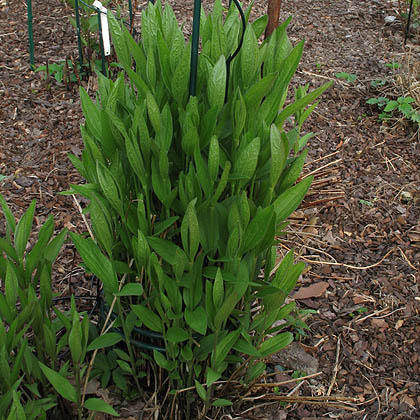

Clematis can grow very quickly. Some varieties can grow up to 20 cm in length in one day. Clematis montana and Clematis vitalba grow the fastest. Low clematis grow considerably less, reaching 2-5 cm per day. The growth quoted here occurs after approx. 3 years, when the clematis is well established and has formed an extensive root system. Younger or newly planted clematis cannot yet achieve this. At this point, I would like to draw particular attention to pruning no. 3.
Here is an example: A Clematis viticella, with an annual growth height of approx. 2.50 – 3.00 meters, was cut back deeply and grows again to 2.50 – 3.00 meters. The growth in the spring and summer months is around 8 – 12 cm per day. After only 3-4 weeks it has already reached the length it had last year!


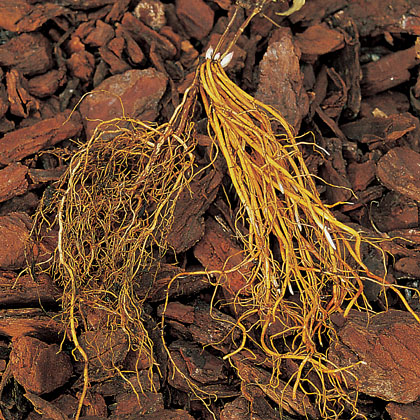

Clematis are divided into deep-rooted and shallow-rooted plants. The deep-rooted plants can penetrate up to 1.50 m into the soil. They have thick, golden-yellow roots that also serve as storage organs. These are Clematis hybrids, Clematis viticella and Clematis texensis. Shallow-rooted plants, on the other hand, reach a depth of 20-30 cm. These are primarily Clematis alpina, Clematis macropetala, Clematis koreana and Clematis orientalis. They have very fine-fibered roots and do not tolerate wetness!
Figures 3 and 4 show our nurse grafting of clematis. Here you can clearly see two root systems on one plant. There are remarkable advantages to this type of propagation.
Only a few clematis specialists worldwide have mastered this method of propagation. Our customers benefit significantly from our propagation method without really knowing it. Why? Thanks to the two different root systems, our clematis are able to adapt to different soil conditions. Further advantages are More vigorous plants due to the influence of the healthy Clematis vitalba as a grafting rootstock. Flowering plants in a shorter time. More resistant to diseases. Iron deficiency symptoms are largely excluded.
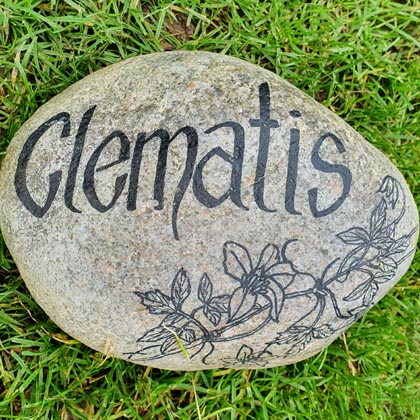
Word creations like: Clematen, Clematisse or Clematiden are wrong and actually unbearable!

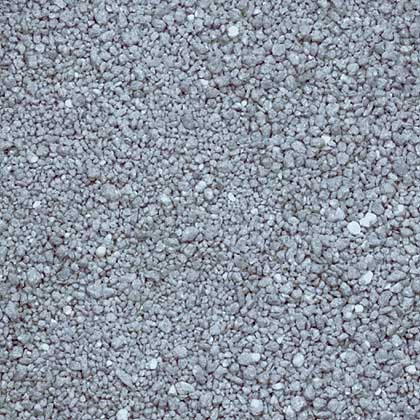


The question of the correct fertilization of clematis is often asked. The fertilizers in use today are more varied than ever before! Which fertilizer is used is a matter of opinion. What are the main differences between mineral fertilizers, stored fertilizers, slow-release fertilizers, liquid fertilizers, nutrient salts, mixed organic/mineral fertilizers, organic fertilizers, vegan fertilizers, organic stimulants and soil additives? Read more…


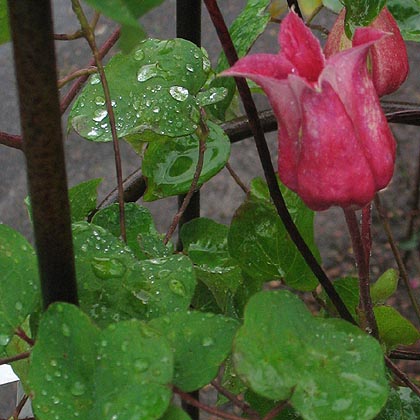

An important topic that accompanies us every day and always draws our attention, both on a large and small scale.
Clematis cope very well with the current extremes. In the event of prolonged rainfall, a garden can be under water for several days, as can be seen in the picture above, which is not a problem for clematis. Exceptions to this are: Alpine clematis, montana and orientalis, all of which have a fine root system.
If periods of drought prevail in midsummer and there is hardly any possibility of ensuring the water supply, the clematis will go on an “austerity course”. This manifests itself differently in the various clematis species. In many species, growth stops first. Next, the bud and flower development remains behind. The flowers appear significantly smaller than is generally typical of the variety. Finally, the lower leaves turn yellow then brown and eventually fall off prematurely. This continues rapidly from the bottom to the top. This process is accelerated by a lack of nutrients. There is often a misjudgement that indicates possible illnesses.
Instead of long dry periods, short-term heat damage can also occur. (Photo top left) This is particularly the case if, after several weeks without direct sunlight, heat waves suddenly occur again, accompanied by direct sunlight. Even Clematis texensis, which are ideally suited to sunny locations, can be damaged. Brown flower edges or leaf necrosis indicate such damage. Unfortunately, climate change also brings new pests. (photo top right)
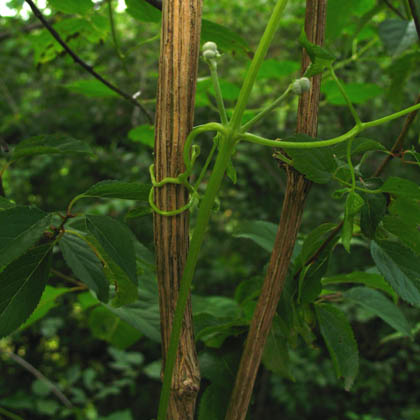


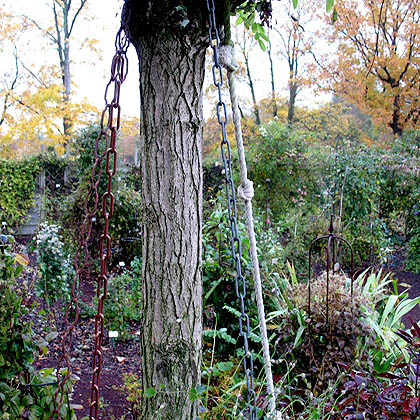
All climbing clematis require a climbing aid. These can be very different materials. Artificial climbing aids such as trellises, fences or obelisks are used. Other plants, trees or shrubs are readily accepted by clematis as natural climbing aids. They hold on by themselves with the help of leaf stalk tendrils. Perennial clematis cannot hold on by themselves and need a “hug“.


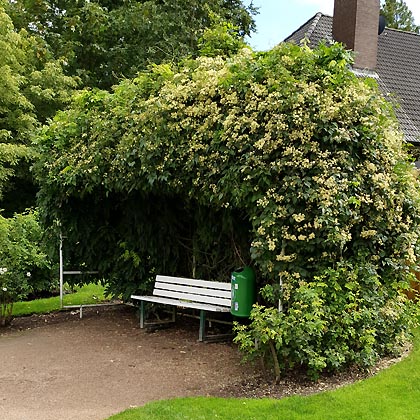
There are numerous clematis that have been introduced from other continents and cope well with our climate here in Central Europe. I am not yet aware of any clematis species that can be classified as anything close to invasive. Our native Clematis vitalba could become a nuisance. With orientalis, alpina, intergrifolia or viticella, individual seedlings may be visible here and there. However, there can be no talk of an “invasion” here.
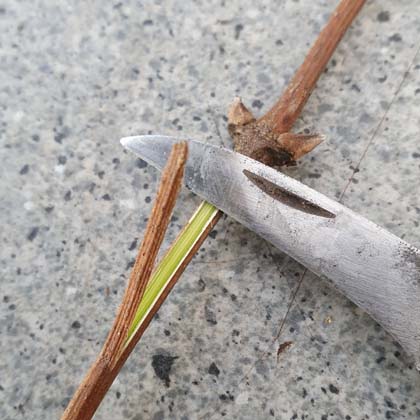
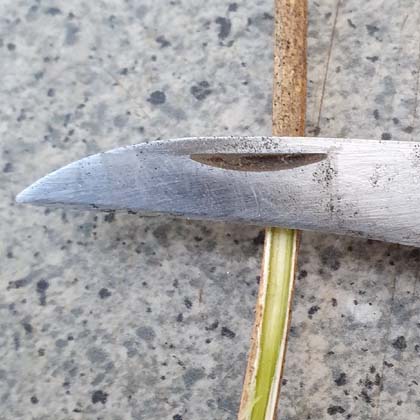
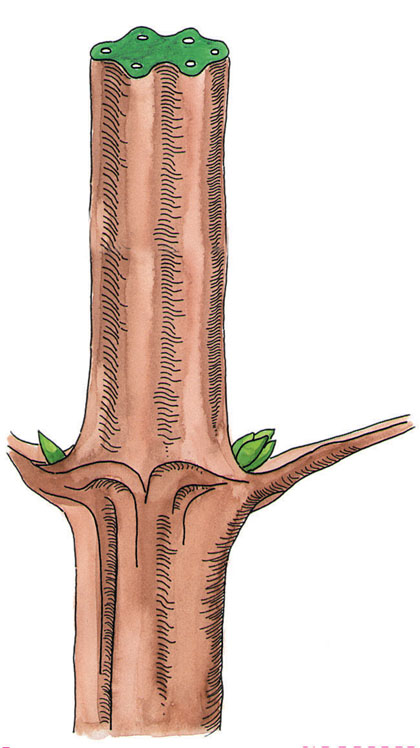

Cut a shoot and take a close look at the cross-section. If the cross-section is green, then the clematis is alive. Another method is to remove the bark with a sharp knife. Then green should also appear underneath – i.e. alive! If brown is visible in both cases, then the shoot in question or the entire plant is no longer alive. Life can also be recognized by whether a shoot is brittle or elastic when bent. Elastic means alive. In winter, signs of life can also be seen on the axillary buds (nodes) if these are clearly visible. With our perennial clematis it becomes more difficult to recognize life. All above-ground parts of the plant die. Live buds are located 2-5 cm below the soil surface or below the edge of the pot. You could compare it to an “asparagus” in miniature form.
+++ New on our site: Guide and About Clematis +++
On-site sales in the nursery Mon-Fri 9:00 – 18:00, Sat 9:00 – 16:00 – Open continuously for you!
take advantage of the many opportunities offered by our extensive clematis assortment, especially now in difficult times. Clematis can do much more than just “climb up”!
Diversity, species and climate protection are important to us and we make an active contribution to this!
Clematis ‘Paul Farges or other names like: fargesioides or Summer Snow
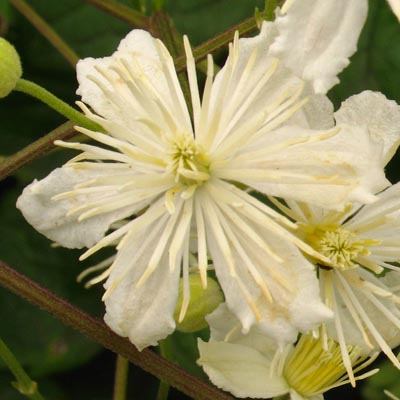
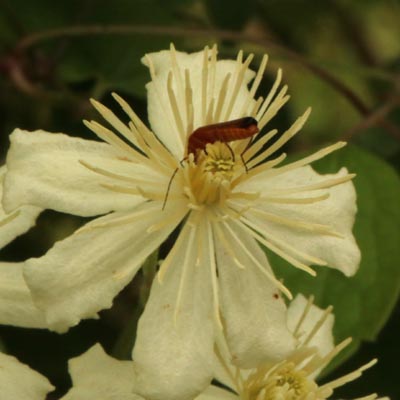
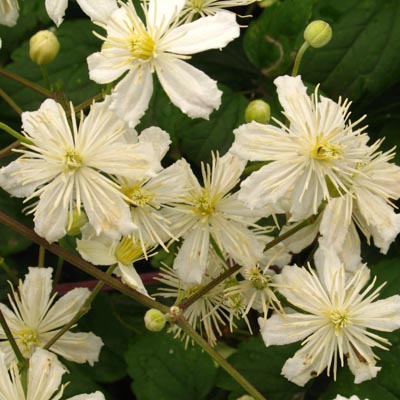

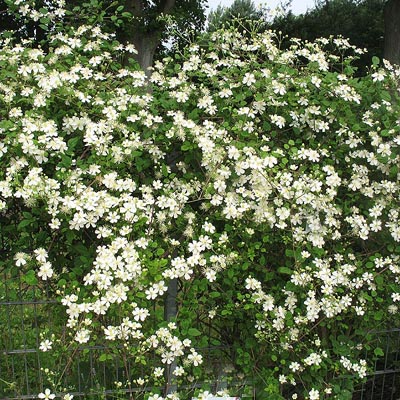

This clematis variety is unbeatable and indispensable in many respects.
The outstanding features are: Absolutely hardy, healthy as a horse and never sick, long flowering period from June to September/October, neutral cream-white color, insect and bee friendly. Vigorous, dense and uniform growth. Provides shelter and nesting opportunities for our songbirds. Is not invasive! It does not attack the masonry and can withstand dry periods for a long time.
Modern architecture today strives to green the facades. Similarly, for noise barriers and fences. Paul Farges is perfectly suited. Here architects and civil engineers should become wide awake!
Other clematis that may be used similarly are: Jouiniana preacox, jouiniana Mrs. Robert Brydon, jouiniana Sander, Jasper, vitalba, gouriana, Anita, orientalis and tangutica/tibetana.
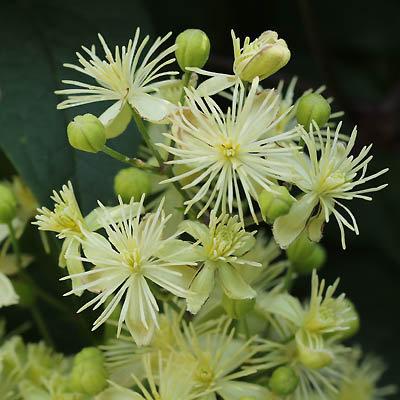
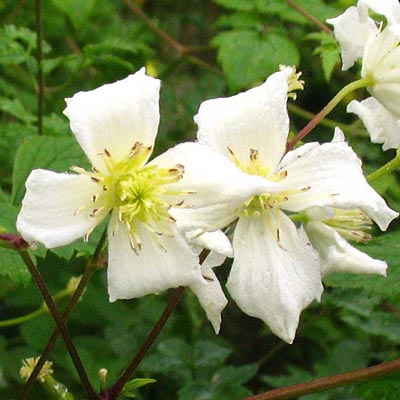
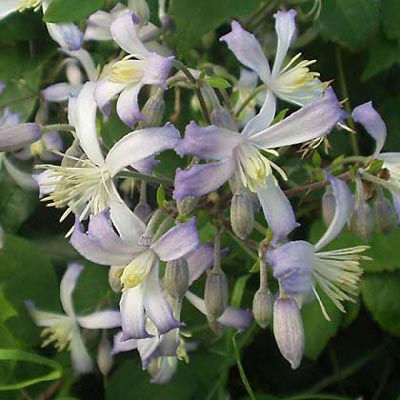
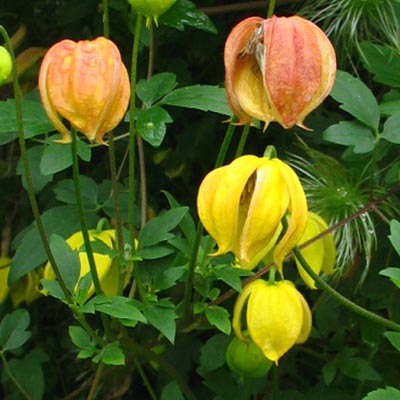
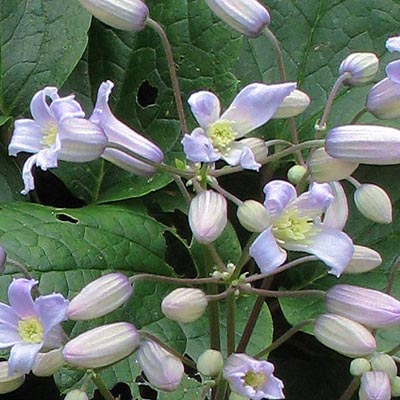
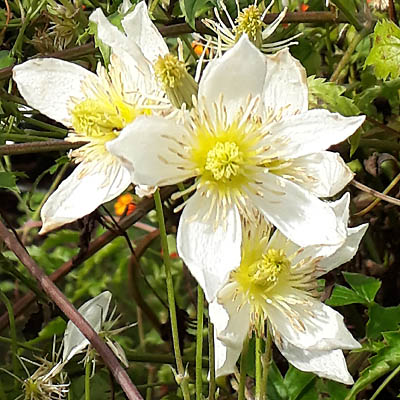
In this context, it is also worth mentioning the green roof. Clematis can also be used here. Especially suitable are the low clematis such as: integrifolia, coactilis and ochroleuca. They grow compactly without climbing help, resting on the soil or further green roof and do not grow higher than 15cm. Bees, bumblebees and other insects find nectar and pollen here.
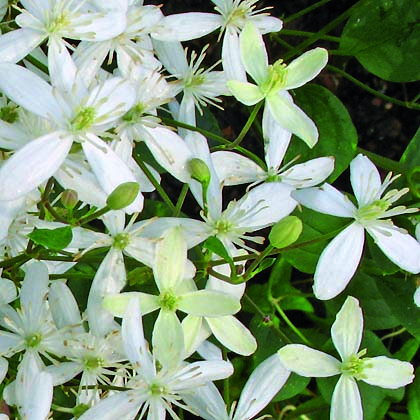
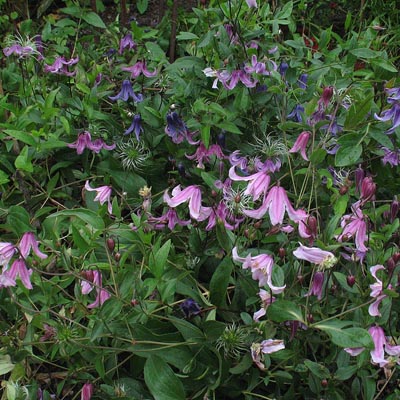

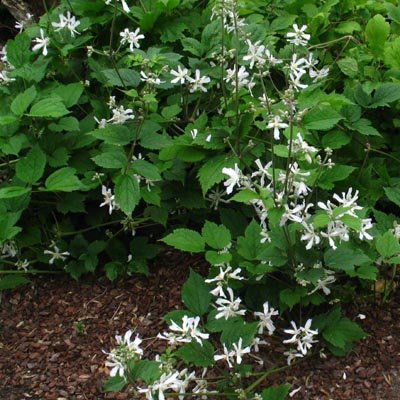
Here, too, you can use Clematis integrifolia or others.
They can hang down between 30-120 cm.

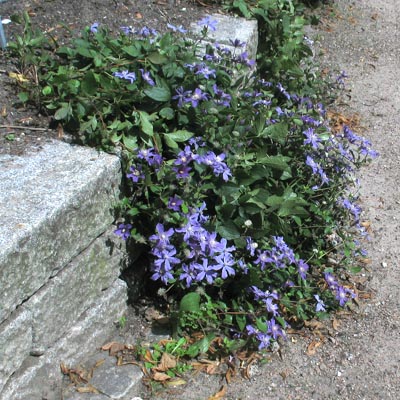
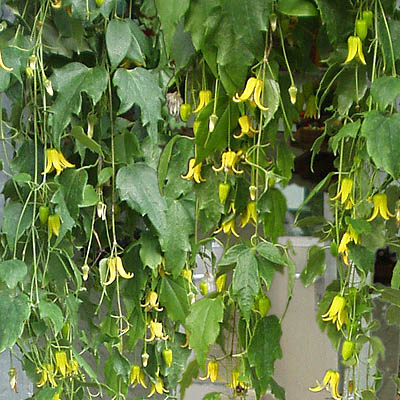
Any chain-link fence or the familiar double-rail fences provide ideal conditions for all climbing clematis to cling to. The height of the fence plays a minor role. Once clematis have reached the crown of the fence and grow above it, then it continues horizontally or droop again. Hedges and trees can be “spiced up” with clematis, they bring additional color. Many combinations are possible here
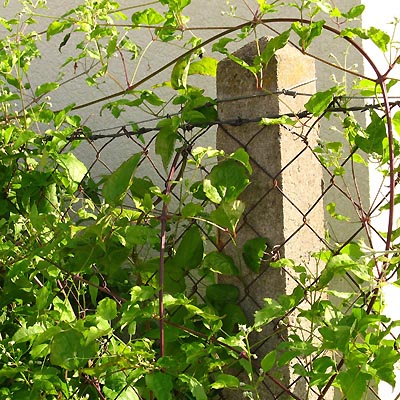

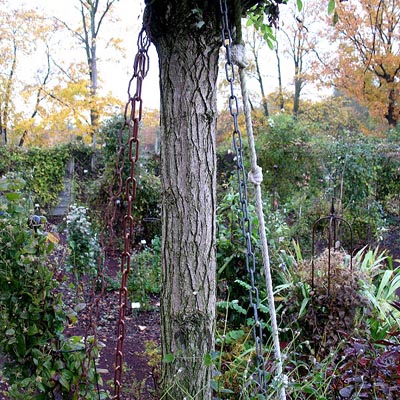
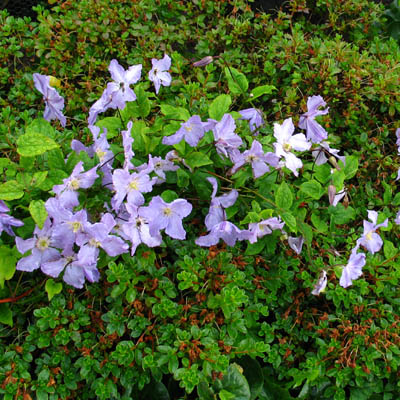
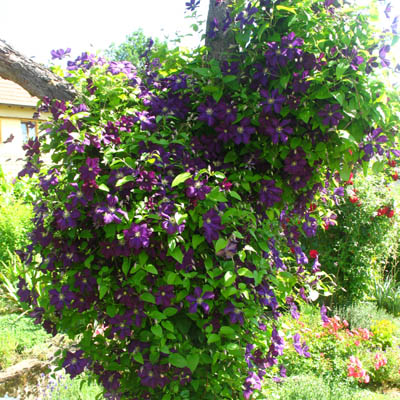
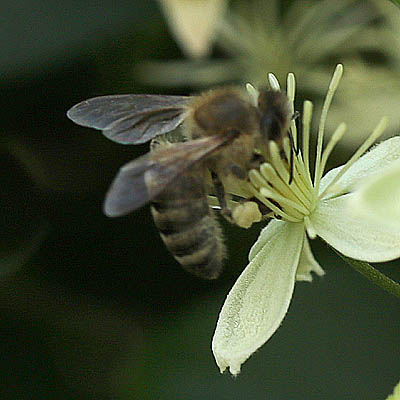
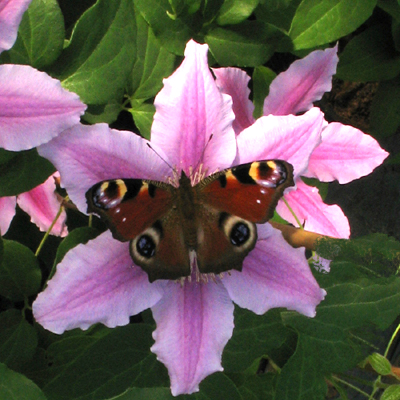
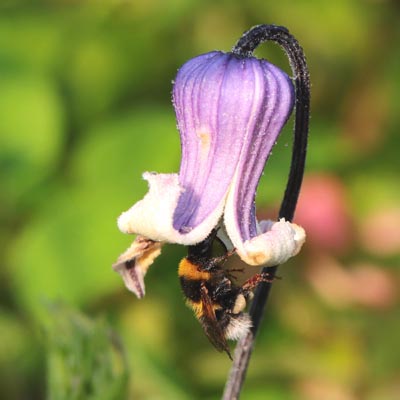

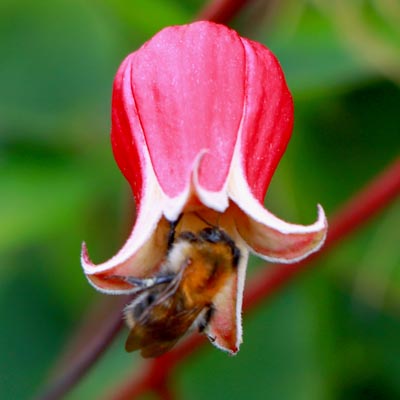
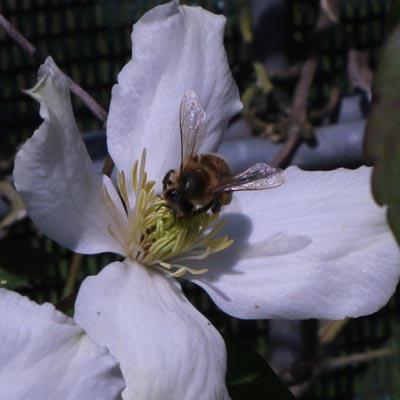
Species conservation is essential and insects and their forage plants play a large part in this. Many of the small-flowered clematis have a lot to offer here! The families of perennial clematis, and here in particular Integrifolias, magically attract insects. Furthermore, the clematis from the Texensis family should be mentioned, and others.
Clematis bloom in all four seasons. Fortunately, the flowering seasons overlap, making it possible to have a seamless flowering season 365 days a year.
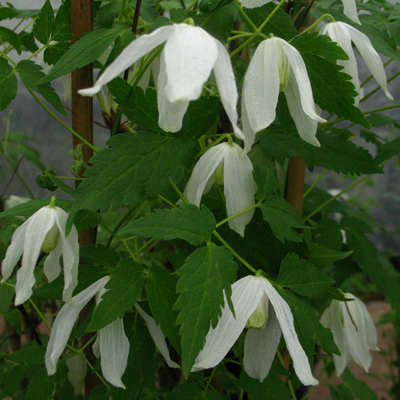


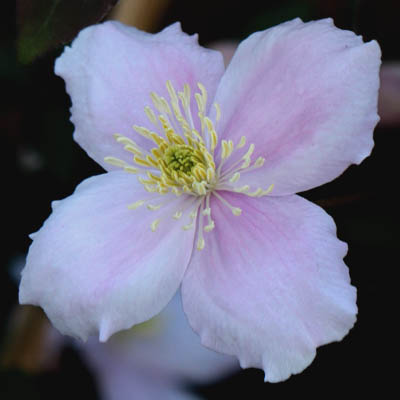
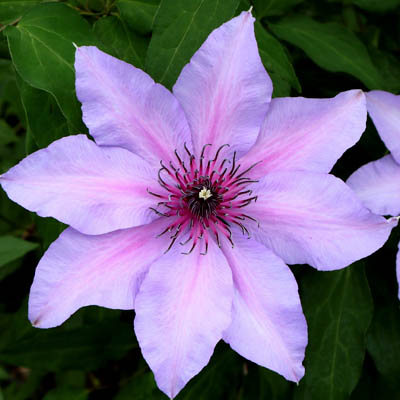
Clematis sibirica Alba bloom as early as March, followed by Clematis alpina, C. macropetala in April and finally C. koreana in May. Clematis montana also bloom in May and June. The large-flowered, early-flowering hybrids also bloom for the first time in May.
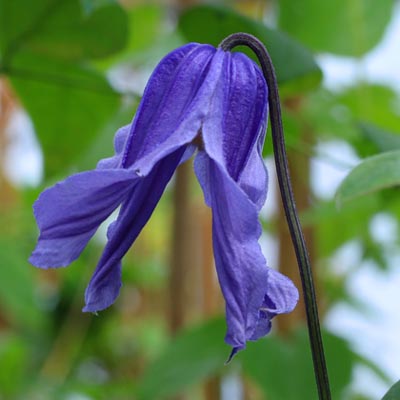

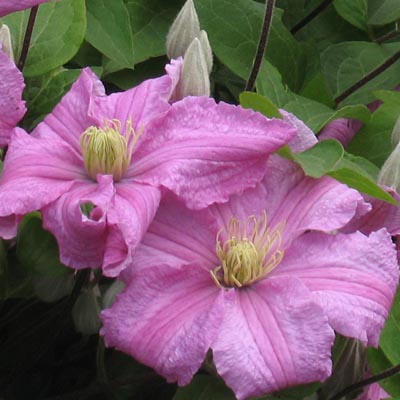
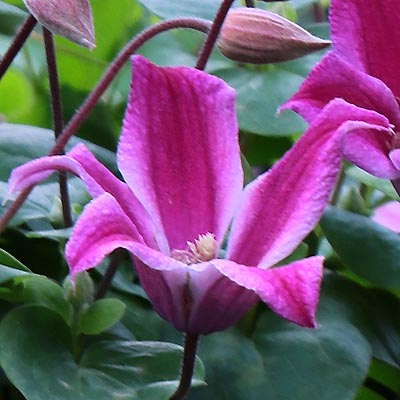

Clematis integrifolia begin to bloom in early June. From the middle of June, Clematis viticella bloom. Summer-flowering hybrids and Clematis texensis follow in July. From August large-flowered hybrids bloom the second time. Special species such as Clematis rehderiana or flammula rubramarginata are also now beginning their flowering season.

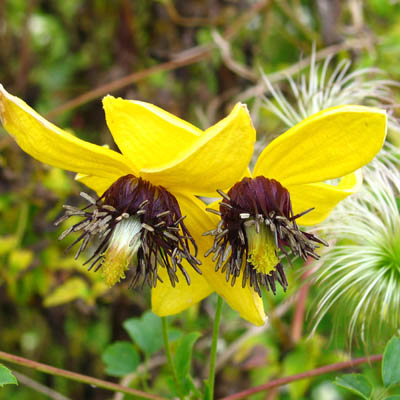

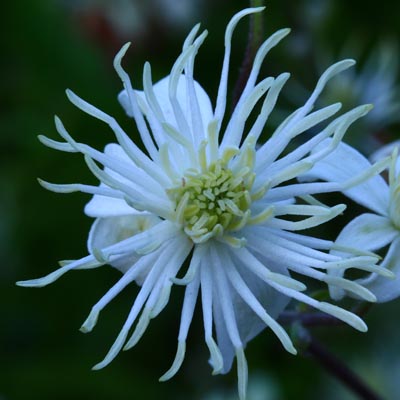
In September, October and November Clematis orientalis have their peak bloom. In this period also bloom Clematis chinensis and maximowiciana (German = Oktoberwaldrebe).
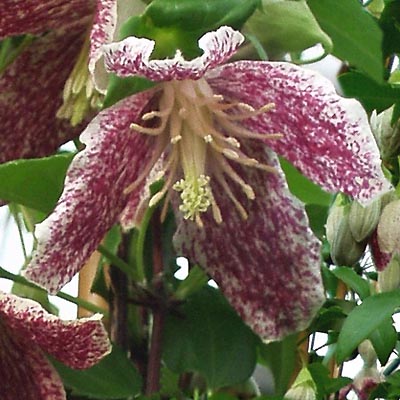
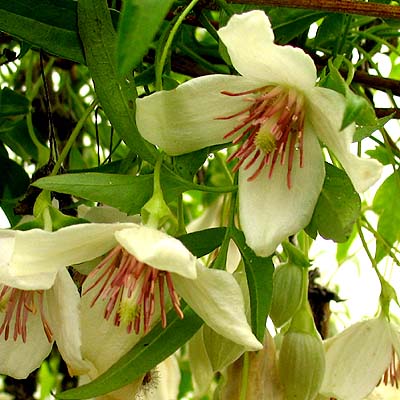

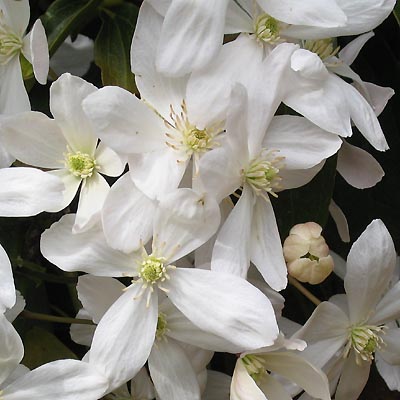
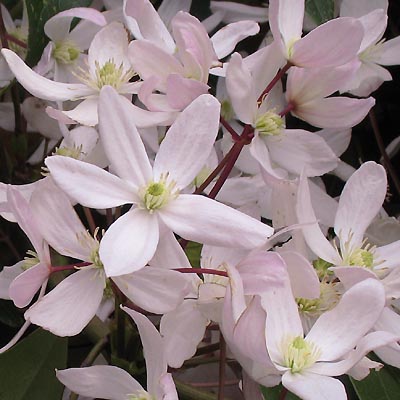
All clematis from the balearica section bloom in this period. The evergreen Clematis armandii and armandii Apple Blossom also bloom from January/February.